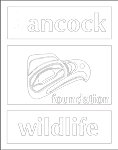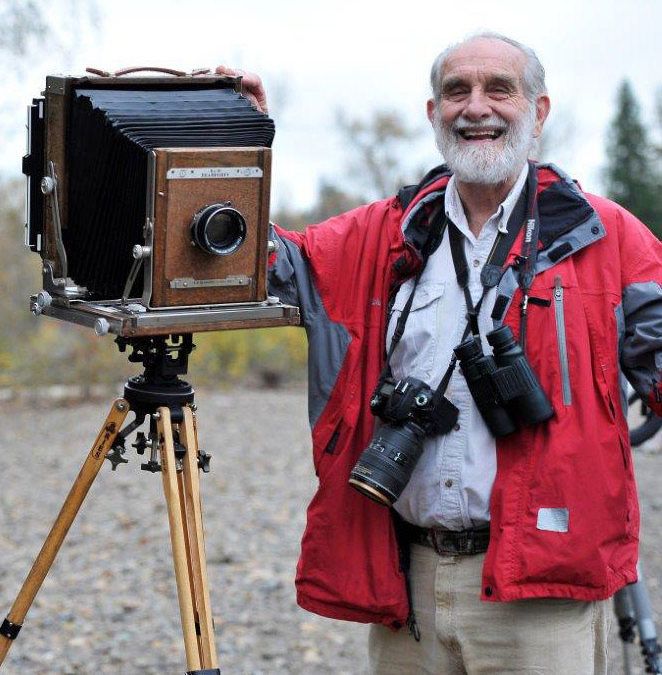I’m back. Nov 7, 2017
First – what a year, losing my/our Mary, seeing so many of you rally around me, going through a very different year of eagle movements due to such a wet 2016 fall that washed out the salmon carcasses and then getting away on the Panama trip that included my eagle talk in Tulsa, Oklahoma at the Sutton Institute. It has been a year of stress and challenges but adapting to life is what life is about. So thanks to so many of you for your support.
This eagle year seems to be starting out with a fall that at minimum has all our eagle cam nests with occupants back. Apparently our Harrison Mills female, who lost her male part way through the nesting season, has even found a mate. Let’s hope it’s successful. This week (Nov 6) I did a count on the Chehalis Flats — 408 eagles along the western shore. I could not effectively see the eastern shore of the Harrison but that is a very good start for this early. There could have been 800 in the close proximity. I suspect to see 150 to 200 arriving per day for the next 30 days. I hope to see many of you at our Fraser Valley Bald Eagle Festival, Nov. 18 – 19, and at our HWF dinners on the Friday and Saturday nights.
Some catch up:
The 2017 – 2018 Eagle Nesting Season: As some of you will know we got all the last year’s cams cleaned and the necessary repairs made to several cam and other existing nests. I gather we are having some server challenges this week but I am assured by Ken that this will be fixed in a short time. If I have one memory of this repair work it is how quickly a nest deteriorates when the resident eagles make no constant repairs or even some minor but constant additions. The Harrison Mills nest, which had Ma without her mate for the last half of the nesting season, had much of the nest literally fall apart. I guess with no mate Ma was apparently fully occupied just bringing in food for the two offspring. Of course we could see this in the cams so when our climbers went up to clean the cams we sent up large, medium and small twigs to totally rebuild the nest frame. I of course remained on the ground as we did not have a lift to get me up the 175 feet to that nest. Our ‘Eco Climber’ with a support team did a totally wonderful job.
The White Rock nest was also totally rebuilt as that pair has historically been short of ‘house maintenance’! The Delta 2 nest actually required two visits! After Myles had done such a great job of cleaning the cams and adding to the nest, mites invaded the cam and totally obliterated the view. Myles had to re-climb the nest and again clean off the offending insects.
Myles and I also modified several potential nest trees in the region to encourage nesting. The effects of this will be seen shortly but several of the sites already have adults seen in the adjacent area.
In the past few days I have visited nearly 75 nests and most already have adults in possession. So far this season the weather is looking good. This means, from my perspective, that the rivers will have good water levels that will facilitate spawning salmon, but not too much water to wash away the dead spawned out salmon carcasses that the eagles want. As most of you know the lower Fraser River valley is at the southern migration for 35,000 to 50,000 western bald eagles. When the salmon arrive in good numbers, the north freezes up for the winter and the river water levels are correct, we get most of the wintering eagles in our backyard.
This year the Hancock Wildlife Foundation has pulled together a wondrous bald eagle study project – the BETA Project. This stands for the Bald Eagle Tracking Alliance. I will soon be outlining this in detail. In short we are sponsoring, with your help, the capturing and tagging of hopefully 100 bald eagles. The point is simple. We have the world’s largest gathering of bald eagles here in the lower mainland and we really have no data on where our 500 nesting pairs and their young go when they leave here at the end of July or where the additional 35,000+ eagles that pass through here come from. We are finally stepping up to the plate to find this out. We are finally assuming the responsibility of understanding more of the comings and goings of this international world wildlife event.
The HWF has pulled together an incredible team of about 10 scientists to coordinate this project under the supervision of Dr. Ron Ydenberg of the Dept. of Zoology at Simon Fraser University. Several of our Directors are key players including David Bird, Mike Seear and of course Myles Lamont and I will be overseeing the trapping at placement of the transmitters. We will have more on this including how you all can get involved in the field work and sponsoring individual birds etc. For the past 10 days I have been organizing the trapping sites and getting some hundreds of pounds of salmon carcasses into the freezer as bait.
Thanks.
David Hancock

